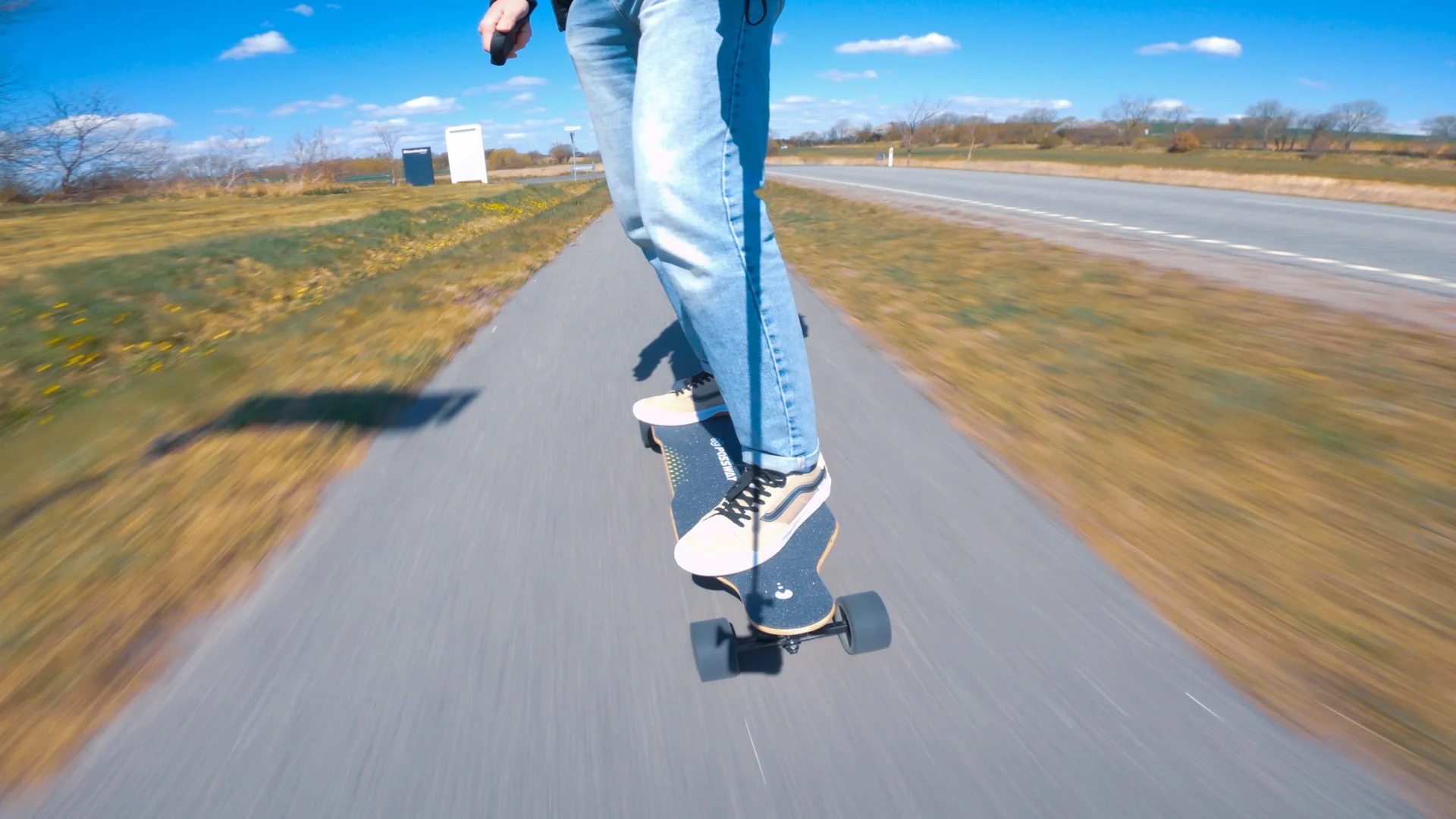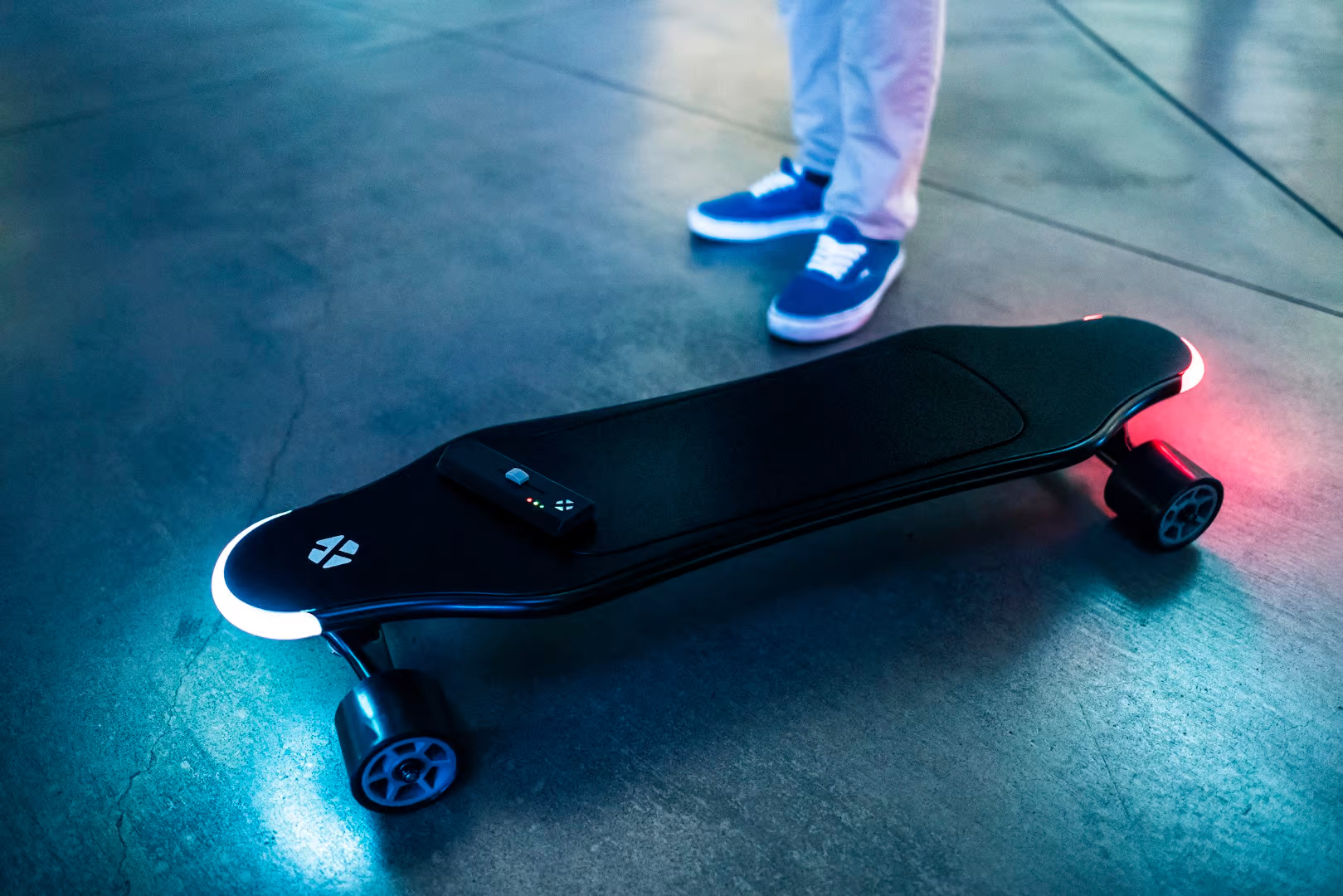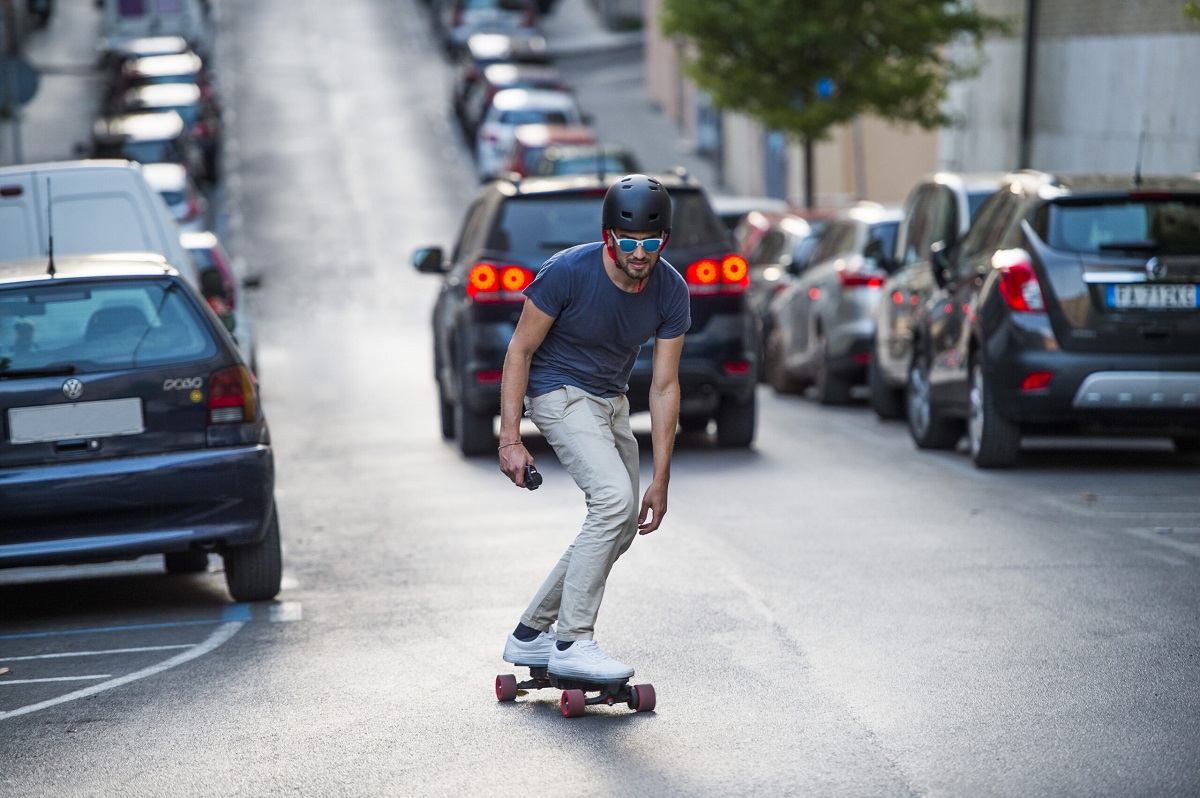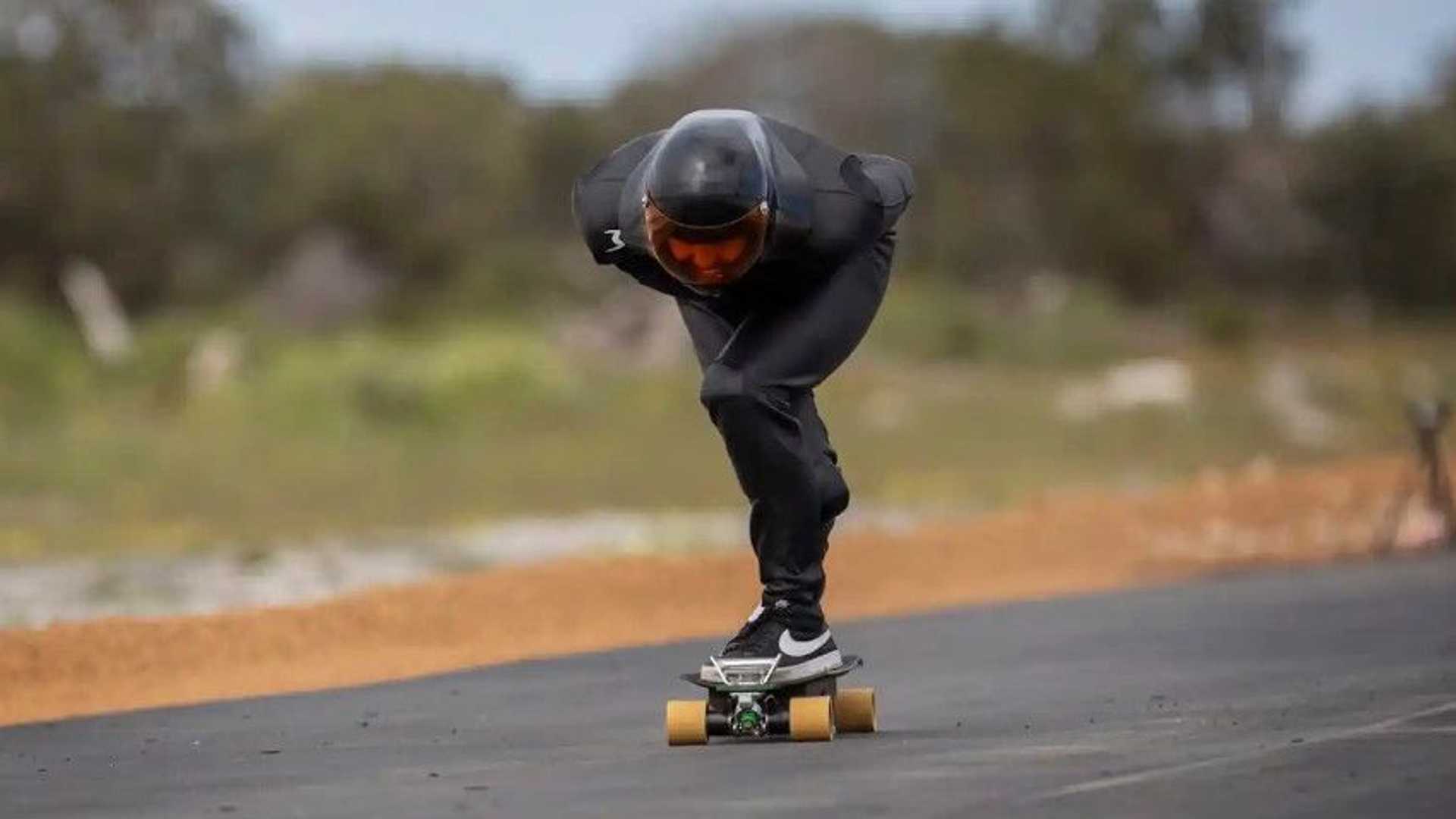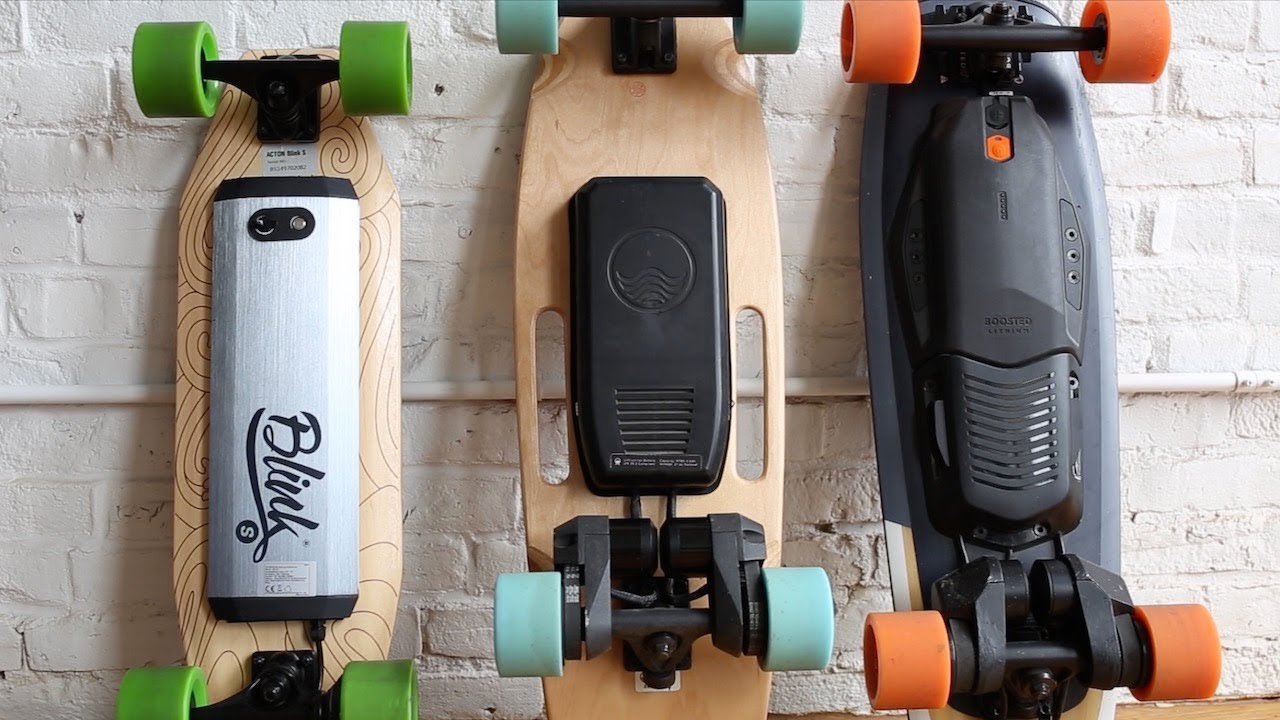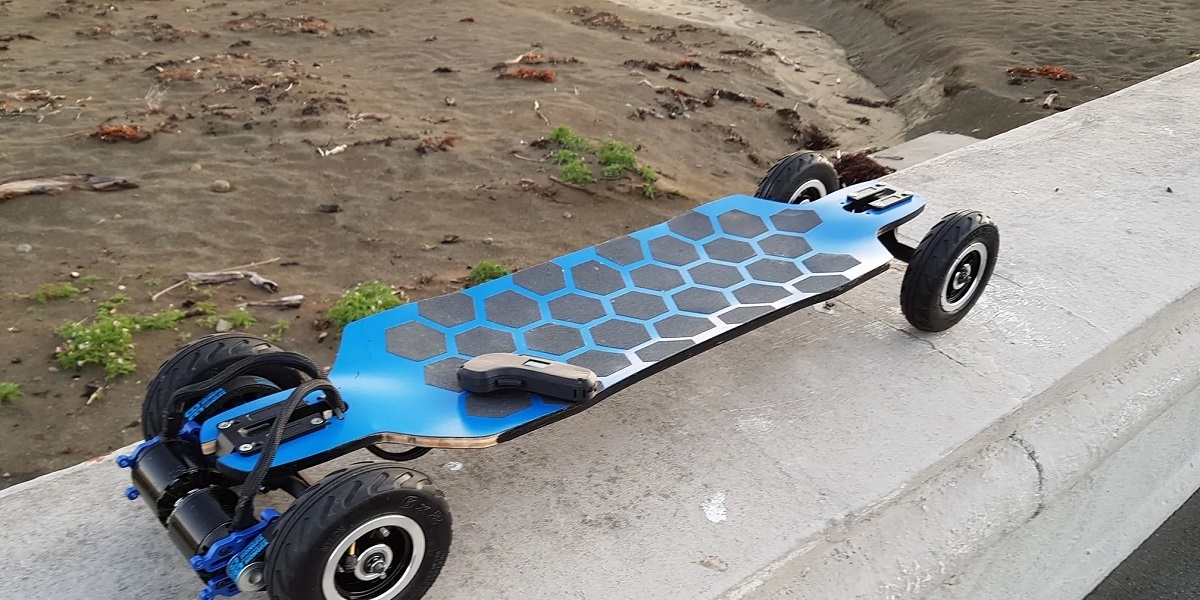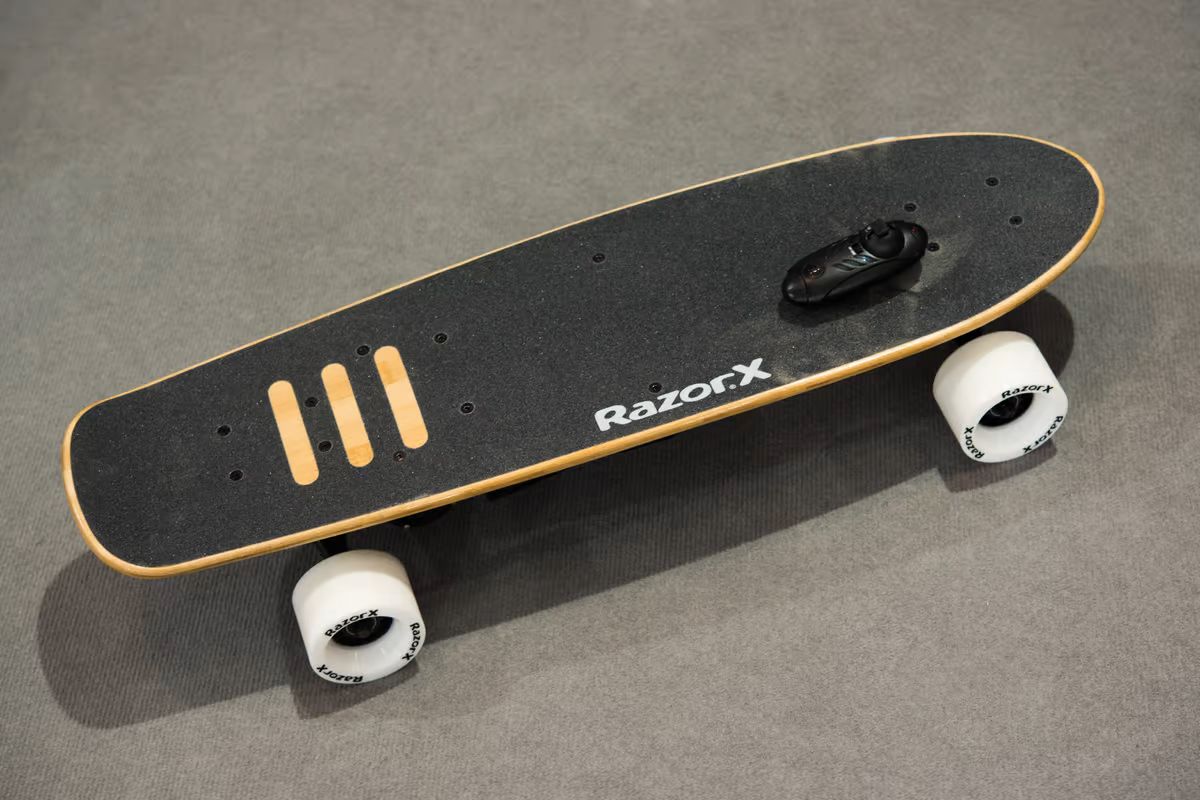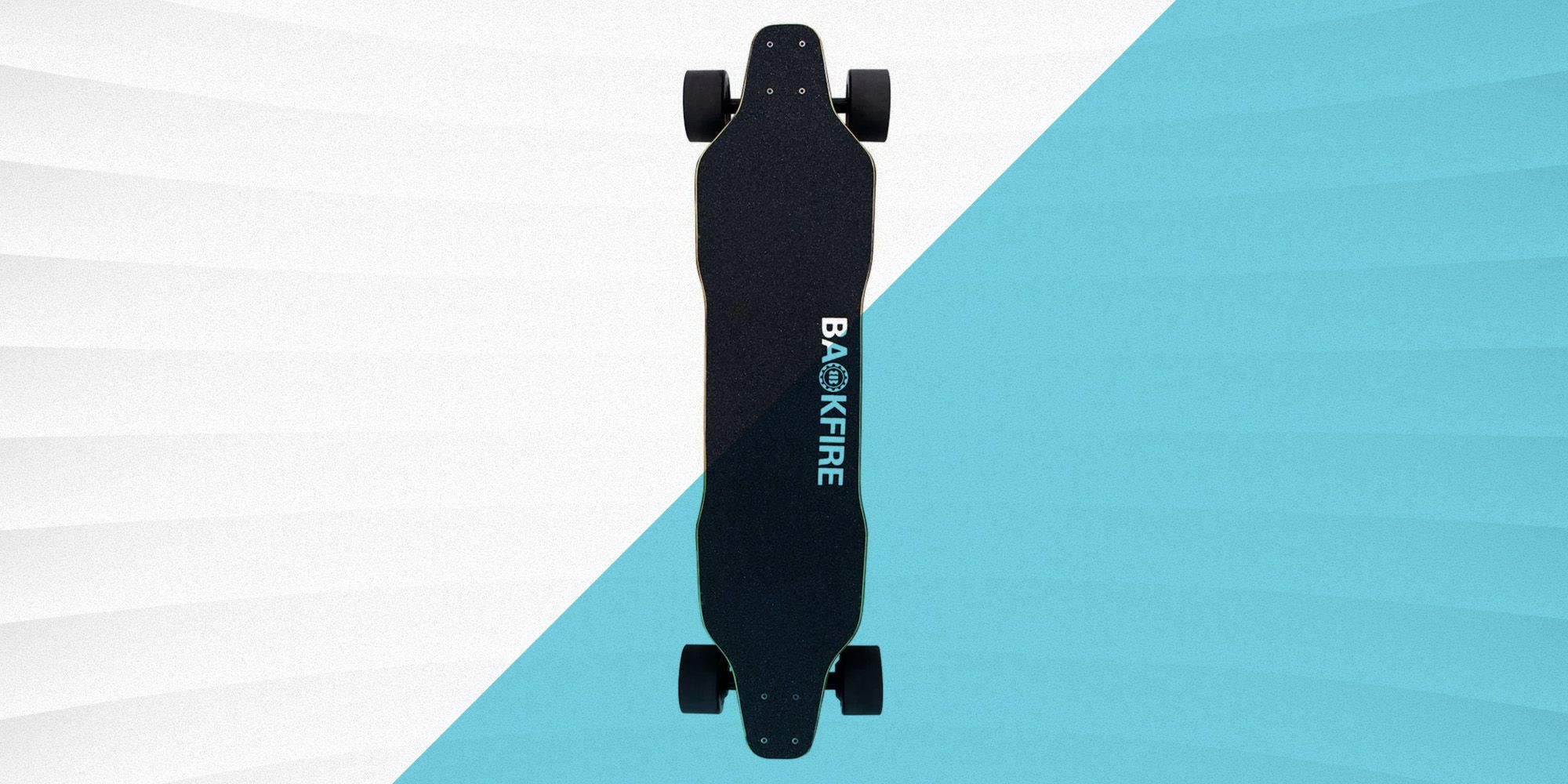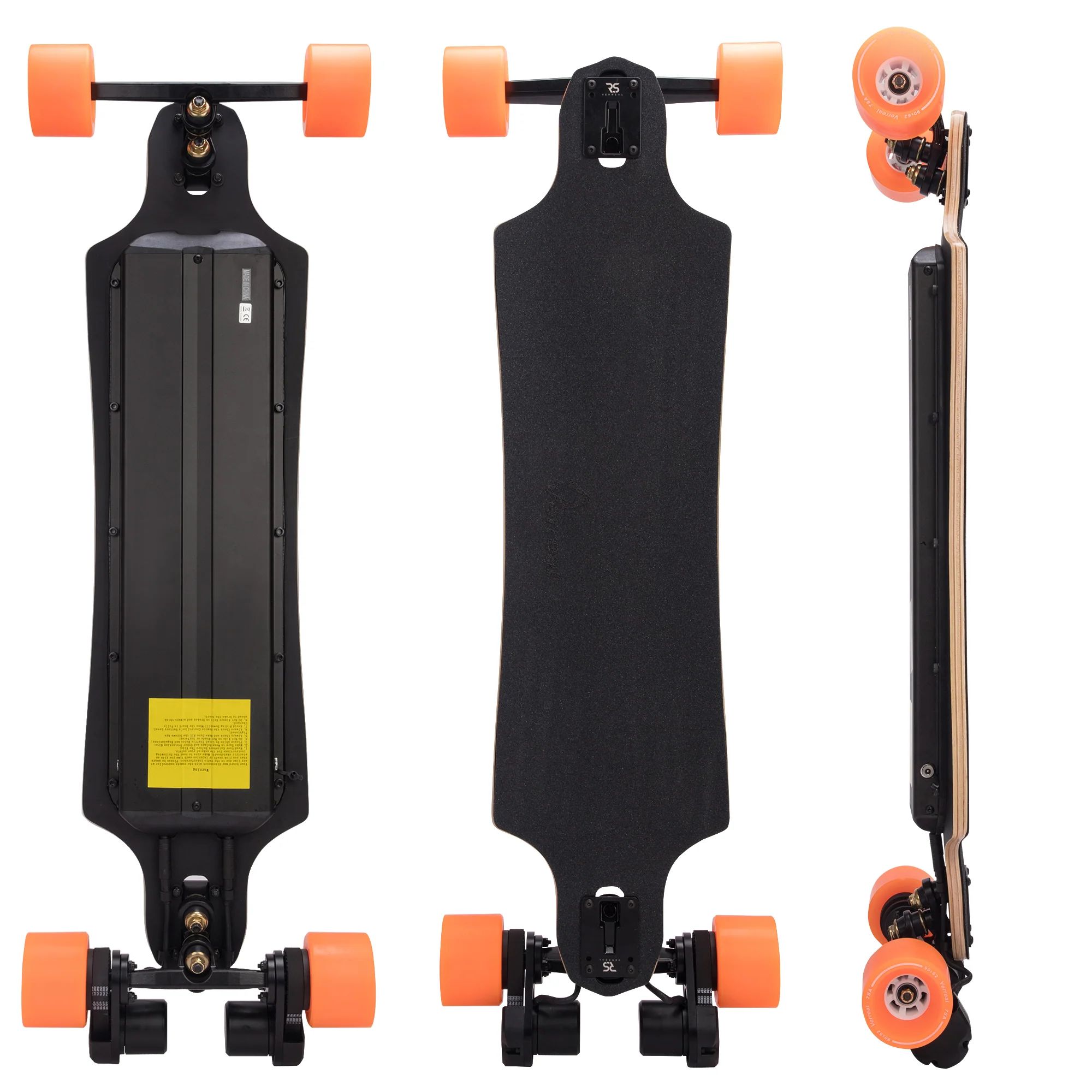Introduction
Electric skateboards have become a popular mode of transportation and recreation for people of all ages. With their sleek design and battery-powered motors, electric skateboards offer a thrilling and eco-friendly way to get around. Whether you are a beginner looking to try out an electric skateboard for the first time or an experienced rider wanting to improve your skills, this guide will provide you with the necessary information to ride an electric skateboard safely and confidently.
Before jumping onto an electric skateboard, it’s important to familiarize yourself with the various components and safety precautions. Understanding the basic mechanics of the skateboard and how to maneuver it will help you ride with ease. Furthermore, being aware of potential risks and taking necessary precautions will ensure your safety while enjoying this exciting mode of transportation.
In this comprehensive guide, we will explore everything you need to know about riding an electric skateboard. We will cover topics such as choosing the right electric skateboard, getting familiar with its components, mounting and dismounting, balancing, pushing off and gaining momentum, controlling speed and braking, turning and maneuvering, riding uphill and downhill, dealing with uneven surfaces, riding in traffic, tricks and advanced techniques, maintaining your electric skateboard, and troubleshooting common issues.
By the end of this guide, you will feel confident and ready to embark on your electric skateboard adventures. So, let’s dive in and discover the exhilarating world of electric skateboarding!
Safety Precautions
When it comes to riding an electric skateboard, safety should always be your top priority. By following these essential safety precautions, you can reduce the risk of accidents and ensure a safe and enjoyable riding experience.
- Wear protective gear: Before stepping onto an electric skateboard, make sure to wear a helmet to protect your head in case of falls or collisions. Additionally, it is recommended to wear knee pads, elbow pads, and wrist guards to protect your joints from potential injuries.
- Familiarize yourself with the skateboard: Take the time to understand the functions and controls of your electric skateboard. Read the user manual thoroughly and become comfortable with the acceleration, braking, and other features before attempting to ride.
- Ride in safe areas: Choose suitable riding locations that are free from heavy traffic and obstacles. Avoid riding on busy roads or in crowded areas where there is a higher risk of accidents. Stick to designated bike lanes or skate parks whenever possible.
- Be aware of your surroundings: Constantly scan your surroundings and stay alert to any potential hazards. Watch out for pedestrians, cyclists, and other vehicles. Always assume that drivers may not see you, and make eye contact with them when crossing intersections.
- Start gradually: If you are a beginner or new to electric skateboarding, start with slow speeds and gradually increase as you gain confidence and skill. Sudden acceleration or high speeds can increase the risk of losing control or falling off.
- Use proper posture and balance: Stand with your feet shoulder-width apart, keeping your knees slightly bent. Distribute your weight evenly and maintain a low center of gravity. This will provide better stability and control over the skateboard.
- Follow traffic rules: Observe all traffic regulations such as stopping at red lights, yielding to pedestrians, and using hand signals for turning. Treat your electric skateboard as you would any other vehicle on the road.
- Beware of weather conditions: Avoid riding in wet or icy conditions as it can significantly affect the grip of your skateboard and increase the chances of accidents. Be cautious of uneven surfaces, gravel, or debris that may cause you to lose control.
- Practice proper braking: Become familiar with the braking system of your electric skateboard and practice gradual braking to avoid sudden stops that could result in loss of control or falls. Always keep a safe distance between you and other riders or objects.
By adhering to these safety precautions, you can minimize the risks associated with riding an electric skateboard and ensure a safe and enjoyable experience for yourself and others around you.
Choosing the Right Electric Skateboard
When it comes to selecting an electric skateboard, there are several factors to consider to ensure you choose the right one for your needs and preferences. Here are some essential tips to guide you in making the right decision:
- Consider your skill level: Determine your level of experience with skateboarding. If you’re a beginner, opt for electric skateboards with lower speeds and stability features to help you gain confidence and control. Advanced riders can go for models with higher speeds and more advanced features.
- Look for a suitable range: The range refers to the distance that an electric skateboard can cover on a single charge. Consider how far you usually plan to travel and choose a skateboard with a range that can comfortably accommodate your needs.
- Check the weight capacity: Ensure that the electric skateboard you choose has a weight capacity that can support your body weight. Exceeding the weight limit can negatively impact the skateboard’s performance and potentially cause damage.
- Consider the motor power: The motor power determines the speed and acceleration of the electric skateboard. Determine how fast you want to go and choose a skateboard with an appropriate motor power to match your desired speed.
- Review the battery life: The battery life of an electric skateboard will affect how long you can ride before needing to recharge. Consider your typical riding needs and choose a skateboard with a battery that can last for your desired riding duration.
- Check the deck material: The deck material plays a crucial role in the durability and flexibility of the skateboard. Look for sturdy materials like maple or bamboo, as they offer a good balance between strength and flexibility.
- Consider the wheel size and type: The size and type of wheels will impact ride quality and maneuverability. Larger wheels provide a smoother ride on rough terrains, while smaller wheels offer better agility for tricks and tight turns.
- Read reviews and user feedback: Research different brands and models of electric skateboards, and read reviews from other riders. Pay attention to their experiences, performance, and reliability to make a more informed decision.
- Set a budget: Determine your budget range and look for electric skateboards within that range. Remember that higher-quality and more advanced features often come with a higher price tag, so strike a balance between your budget and desired features.
By considering these factors and doing thorough research, you can choose an electric skateboard that suits your skill level, riding preferences, and budget. Remember to prioritize safety and quality when making your decision to ensure a fulfilling and enjoyable skateboarding experience.
Getting Familiar with the Electric Skateboard Components
Before you embark on your electric skateboard journey, it is crucial to understand the various components that make up the skateboard. Familiarizing yourself with these components will help you operate and maintain your electric skateboard properly. Here are the key components you should know:
- Deck: The deck is the main platform of the electric skateboard, typically made of wood or composite materials. It provides support and stability for the rider.
- Trucks: The trucks are metal components located underneath the deck that hold the wheels. They allow the skateboard to turn and pivot.
- Wheels: The wheels are responsible for the skateboard’s movement and traction. They come in various sizes and materials, each offering unique riding characteristics.
- Motor: The motor is the heart of the electric skateboard and provides the power needed for acceleration. It is usually located near the rear wheels.
- Battery: The battery is what powers the motor. It is typically lithium-ion and is rechargeable. The placement of the battery can vary depending on the skateboard model.
- Remote control: The remote control allows you to control the speed and acceleration of the electric skateboard. It usually has a throttle for acceleration and a brake for slowing down or stopping.
- Charging port: The charging port is where you connect the charger to recharge the skateboard’s battery. It is typically located on the deck or near the battery compartment.
- Lights and indicators: Some electric skateboards come with built-in lights or indicators to enhance visibility and signal battery status or other information.
- Braking system: Electric skateboards have different braking mechanisms, such as regenerative braking or traditional friction braking, to help slow down or stop the skateboard.
- Additional features: Depending on the model, electric skateboards may have additional features like shock absorption, Bluetooth connectivity, mobile apps, or even built-in speakers for music.
Take the time to review your electric skateboard’s user manual to understand the specific components and their functions. Experiment with the remote control and practice operating the skateboard to ensure you feel comfortable and in control before hitting the road. By familiarizing yourself with the components, you will have a better understanding of how your electric skateboard works and be able to troubleshoot any issues that may arise.
Mounting and Dismounting the Electric Skateboard
Mounting and dismounting an electric skateboard properly is essential for a safe and confident ride. Follow these steps to ensure a smooth start and finish to your skateboarding adventures:
- Mounting the electric skateboard: Stand beside your skateboard with the tail facing the direction you want to go. Place your front foot on the deck, positioning it perpendicular to the length of the skateboard. Use your front foot to stabilize the board as you lift your back foot and place it on the deck near the rear trucks.
- Adjusting your stance: Find a comfortable stance by making sure your feet are shoulder-width apart. Angle your front foot slightly towards the front of the skateboard, and your back foot should be positioned parallel to the tail for stability.
- Finding your balance: Shift your weight slightly towards your front foot to maintain balance. Keep your knees slightly bent and your body relaxed. This will help you adjust to the movement of the skateboard.
- Dismounting the electric skateboard: To safely dismount, shift most of your weight onto your front foot. Lift your back foot off the skateboard and step off the board using your front foot as the anchor. Take a step forward to ensure both feet are safely on the ground.
- Practice mounting and dismounting: Before hitting the road, practice mounting and dismounting your electric skateboard in a controlled environment, such as an open space or grassy area. This will help you become more comfortable with the process and build your confidence.
Remember to take your time when mounting and dismounting the skateboard to prevent any accidents or falls. It’s crucial to be fully aware of your surroundings and ensure a stable footing before starting your ride or stepping off the board.
As with any skill, practice makes perfect. Spend some time practicing mounting and dismounting until you feel comfortable and confident. This will help you maintain control and ensure a safe and enjoyable electric skateboard experience.
Learning to Balance on the Electric Skateboard
Developing a strong sense of balance is crucial when riding an electric skateboard. Being able to maintain your balance will not only help you ride with confidence but also improve your overall control and maneuverability. Here are some tips to help you master balance on your electric skateboard:
- Start with a stationary position: Begin by practicing your balance while standing still on the electric skateboard. Place your feet shoulder-width apart, with your knees slightly bent and your weight evenly distributed.
- Engage your core muscles: Keep your core muscles engaged and your body centered over the skateboard. This will help you maintain stability and respond quickly to changes in movement.
- Practice weight shifting: Start shifting your weight from side to side, getting a feel for how the skateboard responds to your movements. Gradually increase the range of motion to improve your balance and coordination.
- Ride on a smooth, flat surface: Find a flat and open area where you can practice riding the electric skateboard. Smooth surfaces will allow for better stability and help build your confidence.
- Use your arms for balance: Extend your arms out to the sides and slightly bend your elbows. Use your arms for balance, making small adjustments as needed to maintain your equilibrium.
- Keep your eyes forward: Look ahead in the direction you want to go, rather than down at your feet. Keeping your eyes forward helps you maintain a stable posture and anticipate any upcoming obstacles or changes in terrain.
- Gradually increase your speed: Once you feel comfortable with your balance at slower speeds, gradually increase your speed. This will help you adapt to the acceleration and maintain your balance at higher velocities.
- Practice one-foot balance: As you become more comfortable on the electric skateboard, try lifting one foot off the board while maintaining your balance with the other foot. This will improve your overall stability and control.
- Practice stopping and starting: Practice coming to a complete stop and starting again smoothly. Being able to start and stop confidently will enhance your balance and control on the skateboard.
- Give yourself time: Learning to balance on an electric skateboard takes practice, so be patient with yourself. With time and consistent practice, you will improve your balance and become more comfortable on the board.
Remember to always prioritize safety and start with slow speeds as you work on improving your balance. By practicing these techniques regularly, you will gradually enhance your stability, control, and overall riding experience on your electric skateboard.
Pushing Off and Gaining Momentum
Before hitting the road on your electric skateboard, you need to know how to push off and gain momentum. These techniques are essential for getting your skateboard up to speed and starting your ride. Follow these steps to push off and gain momentum effectively:
- Find a flat and open area: Start in a safe and spacious area where you have plenty of room to practice pushing off and gaining speed.
- Place your back foot on the tail: Stand with your feet shoulder-width apart, and place your back foot on the tail of the skateboard. Make sure your toes and the ball of your foot are securely positioned on the tail.
- Keep your front foot stable: Position your front foot near the bolts on the skateboard deck. Keep it stable and parallel to the length of the board.
- Prepare to push: Bend your knees slightly and lean your upper body forward. This will help you generate the necessary force to push off.
- Push off with your back foot: Shift your weight onto your back foot and use the ball of your foot to push off the ground. Push backward and slightly downward, exerting enough force to propel yourself forward.
- Quickly bring your back foot onto the skateboard: As you push off, quickly bring your back foot back onto the skateboard and position it near the center of the deck.
- Transfer your weight forward: Shift your weight forward onto your front foot as you bring your back foot onto the deck. This will help you maintain balance and control.
- Control your speed: Once you have gained momentum, use the remote control to adjust your speed. Gradually increase or decrease the throttle to maintain a comfortable speed for your riding abilities.
- Practice push-offs and gaining momentum: Repeat the process of pushing off and gaining speed in a controlled environment until you feel confident and comfortable with the motion.
It’s crucial to practice these techniques in a safe area before venturing into more challenging terrain. As you gain experience, you will become more proficient in pushing off and gaining momentum smoothly and efficiently.
Remember, safety is paramount, so always wear protective gear and ensure you have a clear path ahead before pushing off and gaining speed. By mastering these techniques, you will be ready to enjoy the thrill and freedom of riding your electric skateboard.
Controlling Speed and Braking
Controlling your speed and knowing how to effectively brake is crucial for maintaining control and ensuring a safe ride on your electric skateboard. By understanding the speed control and braking mechanisms, you can confidently navigate different terrains and riding conditions. Here’s how you can control your speed and brake effectively:
- Use the remote control: Most electric skateboards come with a remote control that allows you to control the speed and braking. Familiarize yourself with the controls and make sure you have a firm grip on the remote while riding.
- Gradually increase speed: Start by riding at lower speeds and gradually increase as you gain confidence and familiarity with your skateboard. Push the throttle on the remote control gently to accelerate smoothly.
- Maintain a comfortable speed: Ride at a speed that feels comfortable and manageable for your skill level. Avoid going too fast if you are not yet confident in your ability to control the skateboard.
- Brake gently: To slow down or come to a stop, apply gradual pressure to the brake on the remote control. Avoid sudden or hard braking as it can cause instability and potentially lead to falls.
- Anticipate and plan your stops: Look ahead and anticipate when you will need to slow down or stop. Plan your stops in advance to maintain a smooth and controlled deceleration.
- Practice emergency braking: While gentle braking is ideal for most situations, it’s important to practice emergency braking as well. Familiarize yourself with how quickly your skateboard can come to a complete stop in case of any unexpected hazards or obstacles.
- Adjust speed for turns and obstacles: Reduce your speed when approaching sharp turns, crowded areas, or obstacles. This will give you better maneuverability and reaction time.
- Monitor battery levels: Keep an eye on the battery level of your electric skateboard. The performance of the motors may decrease as the battery depletes, affecting speed and braking. Recharge or replace the battery as needed.
- Practice speed control and braking techniques: Find a safe and open space to practice controlling your speed and braking. Get a feel for how your skateboard responds to different speeds and braking intensities.
Remember that mastering speed control and braking takes practice and experience. As you spend more time on your electric skateboard, you will become more skilled at maintaining a comfortable speed and braking smoothly, ensuring a safe and enjoyable ride.
Turning and Maneuvering
Learning how to turn and maneuver your electric skateboard smoothly and effectively is essential for navigating different terrains and making precise movements. By mastering these skills, you’ll have greater control over your rides and be able to navigate turns with confidence. Here’s how to turn and maneuver on your electric skateboard:
- Shift your weight: To initiate a turn, shift your weight in the direction you want to go. Lean your body slightly towards the turn, allowing your body’s natural momentum to guide the skateboard.
- Use your shoulders and hips: Rotate your shoulders and hips in the direction of the turn. This will help you maintain balance and control throughout the maneuver.
- Apply gentle pressure to the front or back foot: As you shift your weight, apply gentle pressure to the front or back foot, depending on the direction of the turn. This will help initiate and maintain the turn.
- Practice wide and gradual turns: Start with wide and gradual turns to get a feel for how your electric skateboard responds. Gradually decrease the radius of your turns as you become more comfortable and confident.
- Lean into the turn: When making sharper turns or maneuvering around obstacles, lean your body more into the turn. This will counterbalance the centrifugal forces and help you maintain stability.
- Use your toes and heels: By shifting your weight onto your toes or heels, you can make sharper turns. Experiment with different foot positions to find the most comfortable and effective technique for your turns.
- Practice carving: Carving is a technique where you make fluid and controlled turns by repeatedly leaning from one edge of the skateboard to the other. It adds style and finesse to your riding experience.
- Look ahead: Keep your focus and eyes on the path ahead. Look in the direction of your turn and anticipate any upcoming obstacles or changes in terrain. This will help you plan your maneuvers more effectively.
- Practice quick direction changes: As you become more experienced, practice quick direction changes by making rapid turns from side to side. This will enhance your agility and control on the skateboard.
- Be mindful of your surroundings: Pay close attention to your surroundings while turning and maneuvering. Watch out for pedestrians, cyclists, and obstacles to avoid potential collisions and ensure a safe ride.
Remember to start with wide turns and gradually progress to sharper turns as you become more comfortable and confident in your abilities. With practice, you’ll be able to navigate turns and maneuver your electric skateboard with finesse and control.
Riding Uphill and Downhill
Riding uphill and downhill on your electric skateboard requires understanding how to adapt your riding technique to different slopes and terrains. Whether you encounter steep hills or gentle inclines, mastering these skills will help you maintain control, conserve battery life, and ensure a safe ride. Here’s what you need to know:
- Approaching uphill: As you approach an uphill slope, it’s important to maintain momentum. Shift your weight slightly forward and use the remote control to increase the motor power, gradually applying additional throttle as needed to conquer the incline.
- Find the right speed: Adjust your speed according to the gradient of the hill. Going too fast may cause you to lose control, while going too slow may make it difficult to maintain forward momentum.
- Lean forward: Leaning slightly forward and distributing your weight towards the front of the electric skateboard will help maintain traction and stability while climbing uphill.
- Take a wider path: When riding uphill, take a wider path to help you negotiate the slope more effectively. This will give you more room to maneuver and maintain control.
- Downhill safety: When riding downhill, it’s important to prioritize safety. Keep your weight slightly back and control your speed using the braking system. Test the braking power before descending to ensure you have enough control over your skateboard.
- Control your speed downhill: Gradually apply the brakes to control your speed while descending. Avoid sudden or hard braking, as it may cause the skateboard to skid or lose control.
- Stay balanced and upright: Maintain a stable and upright posture while riding downhill. Keep your knees slightly bent and your weight centered over the skateboard.
- Use your body for stability: Utilize your arms and torso to maintain stability while riding downhill. Keep your upper body relaxed and act as a counterbalance to the motion of the skateboard.
- Be cautious of speed wobbles: Speed wobbles can occur when riding downhill at high speeds. If you experience speed wobbles, try to crouch down slightly and redistribute your weight to regain control.
- Plan your route: Before riding downhill, assess the path and potential obstacles. Be aware of any sharp turns or uneven surfaces that may affect your ability to control the skateboard.
- Practice on different slopes: Gradually practice riding uphill and downhill on different slopes to build your confidence and improve your ability to adapt to varying terrains.
Remember, practice and caution are key when riding uphill and downhill on your electric skateboard. Take the time to familiarize yourself with the shifting dynamics and adjust your technique accordingly. By mastering these skills, you can confidently navigate hills and slopes, making your electric skateboard rides more enjoyable and safe.
Dealing with Uneven Surfaces
Encountering uneven surfaces while riding your electric skateboard is inevitable, but with the right techniques, you can navigate these obstacles safely and maintain control. Whether you come across cracks, bumps, or rough terrain, here are some tips for dealing with uneven surfaces:
- Stay relaxed and balanced: Keep your body relaxed and maintain a balanced stance. This will help absorb the impact of uneven surfaces and minimize the risk of losing control.
- Keep your knees slightly bent: Keeping your knees slightly bent acts as a suspension system, allowing your legs to absorb the impact and maintain stability on uneven surfaces.
- Shift your weight: Shift your weight according to the terrain. If you encounter a bump or crack, distribute your weight towards your front foot to help lift the back wheels over the obstacle.
- Avoid abrupt changes in speed: Abrupt changes in speed can make it more challenging to navigate uneven surfaces. Maintain a consistent speed and use the remote control to control your acceleration and braking gradually.
- Look ahead and plan: Keep your eyes on the path ahead and anticipate any upcoming uneven surfaces. This will allow you to plan your movements and make adjustments accordingly.
- Choose the smoothest path: When possible, choose the smoothest path to minimize the impact of uneven surfaces. Look for alternative routes or shift towards the side of the road to avoid larger obstacles.
- Avoid potholes and large cracks: Larger cracks and deep potholes can pose more significant challenges. Whenever possible, navigate around them or, if necessary, significantly reduce your speed to safely navigate over them.
- Use your legs as shock absorbers: Flex your legs and use them as shock absorbers when riding over bumps or rough surfaces. This will help you maintain stability and avoid being jolted off balance.
- Apply even pressure on the wheels: Apply even pressure on both wheels to maintain balance and prevent one wheel from getting caught or slipping on uneven surfaces.
- Wear appropriate footwear: Choose footwear with good grip to improve traction on uneven surfaces. Avoid wearing loose or slippery shoes that could compromise your stability.
- Practice on varied terrains: Gradually expose yourself to different types of uneven surfaces during your practice sessions. This will improve your ability to adapt and react to different terrain conditions more effectively.
Dealing with uneven surfaces requires both skill and experience. By practicing these techniques and remaining alert to your surroundings, you will become more proficient at navigating obstacles and maintaining control over your electric skateboard.
Riding in Traffic and around Pedestrians
When riding your electric skateboard in traffic or around pedestrians, it’s essential to prioritize safety and be aware of your surroundings. By following these guidelines, you can ride confidently and responsibly in busy areas:
- Know and follow local laws: Familiarize yourself with the traffic laws and regulations in your area. Obey traffic signals, stop signs, and yield to pedestrians as required.
- Ride defensively: Assume that drivers may not see you, and always be prepared for unexpected actions by motorists. Stay vigilant and be ready to react to any potential hazards.
- Be visible: Wear bright or reflective clothing and consider attaching lights or reflectors to your electric skateboard. Making yourself more visible to others will help prevent accidents.
- Use hand signals: Use hand signals to indicate your intentions when turning or changing lanes. This will communicate your intentions to drivers and pedestrians around you.
- Stay on designated paths: Whenever possible, ride in designated bike lanes or areas designated for skateboards. Avoid riding on busy roads or in areas where it is prohibited.
- Slow down in crowded areas: Reduce your speed when riding near pedestrians, in crowded areas, or where there is limited space. Give pedestrians the right of way, and be prepared to stop if necessary.
- Anticipate pedestrian behavior: Pay attention to pedestrians’ movements and be prepared for sudden stops or changes in direction. Always yield to pedestrians and give them ample space.
- Be courteous and respectful: Treat pedestrians and other road users with respect. Avoid rushing past pedestrians too closely and try to maintain a reasonable distance between you and other road users.
- Stay focused: Avoid distractions such as using your phone or wearing headphones while riding. Keep your focus on the road and your surroundings at all times.
- Communicate with eye contact: Establish eye contact with drivers and pedestrians to ensure they see you and acknowledge your presence. This can help prevent misunderstandings and potential accidents.
- Be prepared for unexpected actions: Be prepared for motorists or pedestrians who may make sudden or unpredictable moves. Maintain a safe following distance and be ready to react quickly.
- Stay alert and adapt to changes: Continuously scan the road ahead and be aware of any changes in traffic or pedestrian patterns. Adapt your speed and position accordingly to ensure your safety.
Remember, riding in traffic and around pedestrians requires extra caution and attention. Always prioritize safety, follow traffic laws, and practice good etiquette to ensure a smooth and safe riding experience for everyone.
Tricks and Advanced Techniques
Once you have mastered the basics of riding an electric skateboard, you may want to explore more advanced techniques and tricks to add style and excitement to your rides. Here are some tricks and advanced techniques to consider:
- Ollies: The ollie is a fundamental trick in skateboarding. Mastering the ollie on an electric skateboard involves popping the board with your back foot and lifting both the front and back wheels off the ground simultaneously.
- Shuvits: A shuvit involves spinning the board 180 degrees beneath your feet while in mid-air. It requires coordination and a quick twist of your body to execute the trick smoothly.
- Manuals: Balancing on just the back or front wheels of the skateboard while rolling is known as a manual. This trick requires core strength and precise weight distribution.
- Kickflips and heelflips: Kickflips and heelflips are flips executed with your front foot. Kickflips involve flipping the board with your toes, while heelflips involve flipping the board with your heel.
- Slides and grinds: Slides and grinds involve sliding or grinding the trucks or edges of your electric skateboard on various surfaces such as curbs, rails, or ledges. These tricks require precision and control.
- Air tricks: Once you’re more experienced, you can attempt aerial tricks such as grabs, spins, and flips while in mid-air. These tricks add a higher level of difficulty and require practice and confidence.
- Carving and pumping: Carving involves making sharp, smooth turns by leaning into turns while maintaining speed. Pumping utilizes your body’s movements to generate momentum and maintain speed without pushing, utilizing ramps or banks.
- Power slides: Power slides involve intentionally sliding the wheels of your electric skateboard sideways while riding at a high speed. This trick requires control and finesse to execute properly.
- Combination tricks: Once you have mastered individual tricks, you can start combining them to create more complex sequences and lines. Let your creativity flow and experiment with different combinations to invent your own unique tricks.
- Practice and safety: When attempting tricks and advanced techniques, it is essential to practice in a safe and controlled environment. Wear protective gear and gradually progress as you gain confidence and skill.
Remember, mastering tricks and advanced techniques takes time and practice. Start with the basics and gradually progress to more complex tricks. Always prioritize safety and only attempt tricks that are within your skill level. As you continue to hone your skills, you’ll unlock new possibilities and add excitement and flair to your electric skateboard journeys.
Maintaining and Troubleshooting the Electric Skateboard
Proper maintenance and occasional troubleshooting are essential for ensuring the longevity and optimal performance of your electric skateboard. By following these guidelines, you can keep your skateboard in excellent condition and address any common issues that may arise:
- Regularly clean your electric skateboard: Wipe down your skateboard with a dry cloth after each use to remove dirt and debris. Pay special attention to the wheels and bearings, as they can collect grime that affects performance.
- Check the wheels and bearings: Inspect the wheels for any signs of wear or damage. Replace worn-out wheels to maintain good traction. Additionally, regularly clean and lubricate the bearings to ensure smooth rotation.
- Tighten loose bolts: Check all the bolts and screws on your electric skateboard and tighten them if necessary. Loose hardware can affect stability and performance.
- Keep the skateboard dry: Avoid riding in wet conditions or through puddles, as water can damage the electronic components. If your skateboard gets wet, dry it thoroughly before using or charging it.
- Monitor battery health: Regularly check the battery level of your electric skateboard, and recharge it as needed. Avoid fully depleting the battery or leaving it fully charged for prolonged periods, as it can impact its overall lifespan.
- Inspect the motor and drivetrain: Check the motor and drivetrain components for any signs of wear or damage. Clean the motor housing and remove any debris that may affect performance.
- Calibrate the remote control: If you experience any issues with the remote control, such as unresponsiveness or erratic behavior, try calibrating it according to the manufacturer’s instructions.
- Check for software updates: Stay up to date with the latest firmware or software updates provided by the skateboard manufacturer. These updates often address bugs or improve performance.
- Troubleshoot common issues: If you encounter issues like loss of power, connectivity problems, or unusual noises, consult the user manual for troubleshooting steps. If the problem persists, reach out to the manufacturer’s customer support for further assistance.
- Follow maintenance instructions: Read and follow the maintenance instructions provided by the skateboard manufacturer. These instructions will help you maintain optimal performance and avoid unnecessary damage to your electric skateboard.
- Seek professional assistance if needed: If you are unsure about troubleshooting or performing maintenance tasks, it is best to seek professional assistance. An experienced technician can help diagnose and resolve any complex issues.
By regularly maintaining your electric skateboard and promptly addressing any issues, you can ensure it stays in great condition and performs at its best. Regular inspections, cleaning, and troubleshooting will help you enjoy a smooth and reliable riding experience on your electric skateboard for years to come.
Conclusion
Congratulations! Now you have all the information you need to confidently ride an electric skateboard. We covered various aspects, including safety precautions, choosing the right skateboard, mounting and dismounting, balancing, controlling speed and braking, turning and maneuvering, riding uphill and downhill, dealing with uneven surfaces, riding in traffic, tricks and advanced techniques, and maintaining and troubleshooting your electric skateboard.
Remember, safety should always be your top priority. Wear appropriate protective gear, follow traffic rules, and be mindful of your surroundings. Start with the basics, practice regularly, and gradually progress to more advanced skills and tricks. Maintain your electric skateboard by performing regular cleaning, checking components, and addressing any issues promptly.
Enjoy the thrill and freedom of electric skateboarding, but always ride responsibly and respect other road users. Keep practicing, pushing your boundaries, and embracing new challenges. With time and experience, your skills will improve, and you’ll be able to explore new terrains, master advanced tricks, and fully enjoy the exhilarating world of electric skateboarding.







